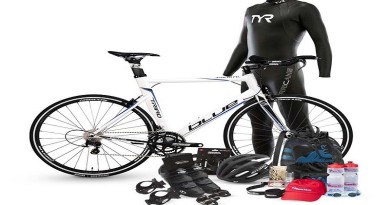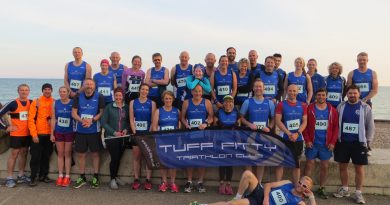Fluid replacement – how important is it to get it right?
I learnt about hydration the hard way.
Etape De Tour 2006 from Gap to Alpe D’Huez. I was so looking forward to climbing the iconic route which had been the feature of so many Tour De France races. 21 hairpins and I was already visualising counting them off one by one..a steady cadence passing people with my smooth in the saddle style.
Truth? I walked it…..and I mean walked it…every single step of that iconic climb was done in my socks, helmet slung over my handlebars and shoes still attached to the pedals.
It had been probably the hottest day on record in France. By the time the sun came up for the start it was already touching 40 degrees. What this meant was that by the time we hit the food zones, water was rare to find apart from Evian Menthol. I wasn’t prepared and I suffered the consequences. When I arrived at the top of the Alpe D’Huez my mum hugged me and said “you’re covered in sand!” it wasn’t sand it was salt and I was very very dehydrated.
I should have gone straight to the medical tent and had a saline drip…if not two. However I didn’t (it was full!) and suffered probably the worst post race trip back to the hotel ever.
So what have I learnt about hydrating?
For triathletes who are looking to race over 2 hours it becomes very important and there isn’t a one size fits all. The volume of fluid that we lose can be based on temperature and also climate and yes even the pool..okay you’re in water but your still sweating, why else do we ask you to bring a bottle of water?
According to Slowtwitch.com “the loss of fluid and electrolytes through sweat is highly variable depending on the individual, fitness/acclimatization and temperature/humidity” (1)
So how much do we sweat and what can we do about it?
An average person sweats between 0.8 to 1.4 litres (roughly 27.4 to 47.3 oz.) per hour during exercise. To help you with a visual, the smaller bike water bottles typically hold 0.6 litres (20 oz.) of fluid and the larger bottles hold 0.7 litres (24 oz.) of fluid.
In order to keep hydrated first we need to work out how much we sweat.
Simple Sweat test.
The easiest way to measure your sweat rate is to weigh yourself without clothes on before exercising for one hour. After an hour of exercise, return home, strip down and weigh yourself again. Assuming you did not use the toilet or consume any fluids during exercise, your weight loss is your sweat rate.
For each kilogram of lost weight, you lose one litre of fluid. (For each pound lost, you lose 15.4 oz. of fluid.)
This test can be done in all three disciplines and will give you a good indication as to your fluid loss.
However simply putting water back into your body is not going to hit the mark and could cause Hyponatremia.
Hyponatremia
Also known as low sodium concentration or water intoxication, occurs due to prolonged sweating coupled with the dilution of extracellular sodium caused by consuming large amounts of fluid with low or no sodium.
According to Triathlon.competitor.com
“Hyponatremia, or water intoxication, results when the sodium concentration of the blood falls too low due to prolonged sweating combined with excessive fluid consumption. Symptoms include dizziness, muscle cramping, confusion, and stomach bloating. Severe cases can lead to seizure, coma, and even death” (2)
It is then a very fine line between too much and too little. Sports Drinks manufacturers urging us to drink more (why do you think?) and claiming that extra sodium will help combat the onset of hyponatremia but the truth remains it won’t replace the sweat concentration that you have lost. In fact the more you drink, the more you dilute your blood sodium concentration.
Triathletes often choose to boost their sodium intake during races by consuming salt tablets, or salty food such as pretzels but even this measure will do little to reduce the risk of hyponatremia if you drink too much.
Studies from the University of Cape Town, South Africa, and the University of Auckland, New Zealand, found that sodium supplementation during an Ironman had no effect on blood sodium concentration or blood plasma volume.
So what do you need to take away from this?
- Test yourself whilst training and racing
- Look for the signs of being hydrated and dehydrated.
- Don’t force yourself to drink more than your thirst demands.
- Remember regardless of whether its wet, cold, sunny or windy you will lose fluid so drink accordingly.
This just scratches the surface of what is a very important part of your triathlon journey.
Get it right and the currents behind you; the roads are smooth and your running on air. Get it wrong and your swimming upstream; you’re doing 112 miles of Paris-Roubaix and your running in sand.
Coach Wardy.
References
1.http://www.slowtwitch.com/Training/General_Physiology/Overdrinking_or_not_enough_salt__5253.html
2. http://triathlon.competitor.com/2011/09/nutrition/kona-training-avoiding-hyponatremia_4984




